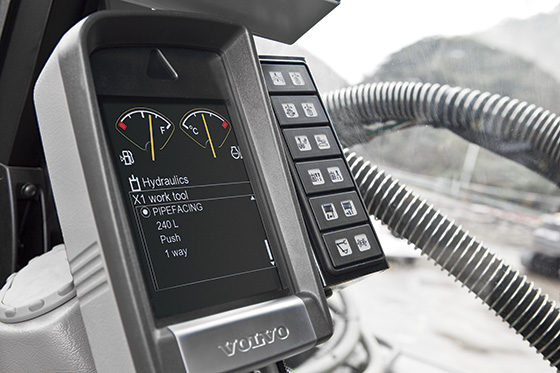The leap of the century

To highlight its 200th edition, M&T hears experts and confirms that on-board electronics was the main innovation recently introduced in the equipment industry
Undoubtedly manufacturers are the best skilled peopleto select the most important advancements in the industry of machines and equipment along the last fifteen years. To remark this historic edition, M&Tbrings the opinion of some of the main executives of the country about this subject. They are pointing almost unanimously to the technologic leap that changed the history of the industry and wasproperly recorded in the pages of this magazinesince its introductory moment. It is worthwhile to remember.
CONSTRUCTION
From the use of plastics and fiberglass in the fairing of machines to the introduction of telemetry, several processes of technologic innovation were present in the industry along the last 15 years. But for almost all respondents one point stands out: the irreversible emergence of on-board electronics.
Vice-president of Case Construction Equipment for Latin America, Roque Reis points remote monitoring systems as probably the most impressive advancement in fleet management during the current times. “The possibility of getting all information in real time for fleet and job management ensures great advantages in different points, since it allows a high saving of labor, prevents equipment idleness, optimizes fuel consumption, makes easy maintenance planning, helps in the fleet calculation and prevents theft, among other advantages”, points the executive.
Caterpillar expert in technologies, Felipe Ruy confirms this analysis pinpointing the highest versatility brought to the industry by the combination of technologies and services. “Each workplace has its own challenges. That is why different technologies have to be combined and customized in a way that is clear for the customer and its business”, says him. “Therefore, electronics helps the client to monitor and improve its operations related to management, productivity, safety and sustainability of the equipment, allowing a better control of the workplace.”
This opinion is emphasized by Marcus Marchesin, director of operations of JCB in Brazil, who highlights the largest control of engine injection system and ofhydraulic power variation. “It is possible to confirm that on-board electronics ensured a high leap in relation to a better use of diesel engine power connected with hydraulic power, ensuring a substantial increase in production and fuel savings”, says him.
The same subject is pinpointed by Roberto Marques, leader of the forest and construction division of John Deere Brasil.For him, on-board electronics certainly allowed this high leap. “Remote monitoring of the fleet brings data that support and make easier businessmen decisions”, emphasizes the expert, highlighting also features such as virtual validation of production lines. “These tools allowed us to currently reduce the period of development and the need of prototypes and to speed up the development of new products with very high quality standards. This was unbelievable some years ago.”
Another person who also agrees with the choice of electronic circuits isAgnaldo Lopes, vice-president of sales and marketing of Komatsu Brasil. According to him, new on-board features ensure a continuous improvement in the works. This set includes communication features with the equipment, such as satellite-supported monitoring and applications for cell phones, which make easier to obtain information about the operation. “The client may currently follow position, hour record, work load, fuel consumption, electronic fence and many other possibilities”, points him.
Electronicsalso made troubleshooting easier, that is currentlycarried out in a predictive way. “Using on-board electronics, the processes of application, monitoring and troubleshooting were improved and a series of gaps between application and monitoring was also solved”, saysLúcia Guariglia, marketing coordinator of Link-Belt Excavators. “This way, the client has in his own hands the operation DNA which allows him to evaluate if the equipment is appropriate and even to carry out an analysis of useful life of machine sensors.”

Av. Francisco Matarazzo, 404 Cj. 701/703 Água Branca - CEP 05001-000 São Paulo/SP
Telefone (11) 3662-4159
© Sobratema. A reprodução do conteúdo total ou parcial é autorizada, desde que citada a fonte. Política de privacidade














